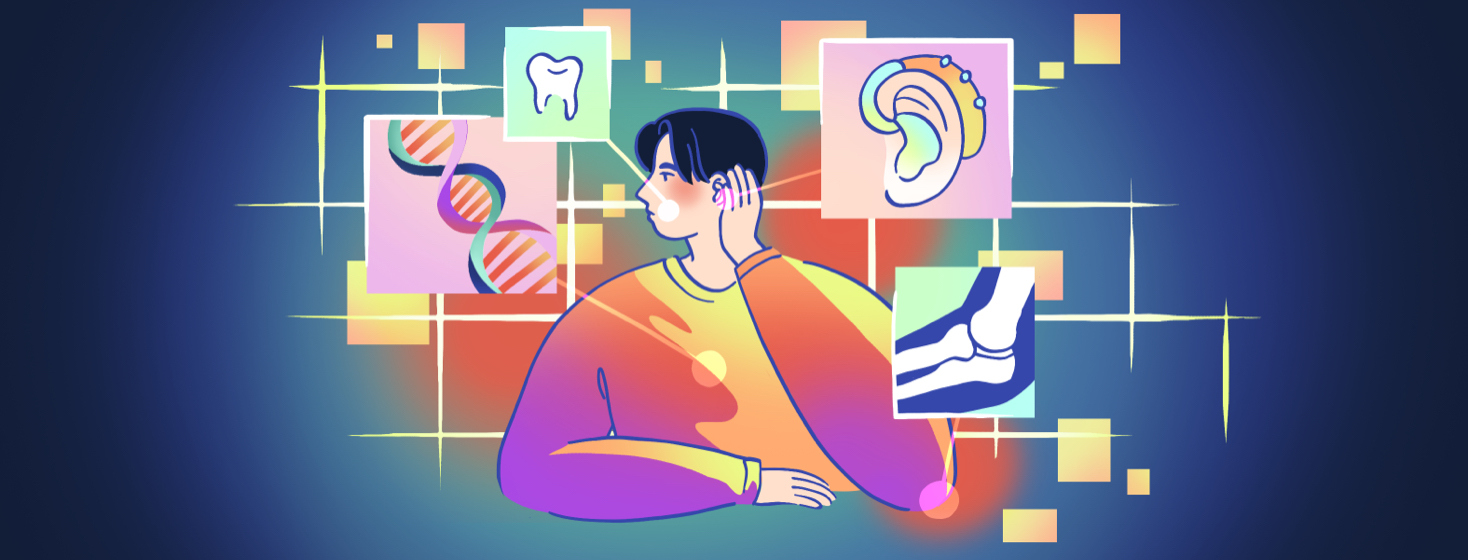Living With X-linked Hypophosphatemia
Reviewed by: HU Medical Review Board | Last reviewed: July 2023 | Last updated: October 2024
X-linked hypophosphatemia (XLH) is a rare genetic condition that lasts a person’s entire life. It is caused by a mutation in the PHEX gene that prevents the body from using the nutrient phosphorus correctly. Since phosphorus is necessary for many bodily functions, this defect leads to a wide range of symptoms.1
Symptoms include:1
- Weak bones, especially rickets (bowed legs or knock knees)
- Fractures
- Bone and joint pain
- Delays in growth and development
- Weak teeth and abscesses (tooth infections)
- Fatigue and muscle weakness
- Hearing loss
The severity of these symptoms varies widely from one person to another.1
While XLH creates many health and social challenges, early diagnosis can help people manage the condition. With early and correct treatment, some symptoms can be reversed or well-controlled. Regular medical checkups with a team of specialists are necessary to manage XLH and will last a person’s whole life.1
Children living with XLH
Most people with X-linked hypophosphatemia are diagnosed as a baby or toddler. Weak leg bones begin to bow in or out, leading to a condition called rickets. Weak legs make it harder for babies to learn to walk. Plus, bones and joints may not develop correctly, leading to short stature and bone and joint pain.1
However, proper treatment to improve bone strength and growth rates can improve self-esteem and reduce or reverse symptoms.1
School accommodations
IEP (individualized education program) and 504 plans spells out how a student will be accommodated if they attend a public school. These plans can help a child feel more comfortable at school and improve their performance.2
Children with rickets may need accommodations if they use assistive devices to help them walk, have developmental delays, or require access to pain medicine while at school. These plans also document things like how long absences will be handled.2
IEPs are generally used for students with a health condition that impacts their ability to learn, while 504 plans are used for students who need accommodations at school.2
Managing pain in children
The bone, joint, tendon, muscle, and tooth problems of XLH can be quite painful. Pain may limit a child’s desire to participate in school activities and play, leading to isolation. That is why good pain management is needed for children with XLH. Pain management may include:1
- Assistive devices
- Pain medicines
- Physical therapy to strengthen muscles and joints
- Occupational therapy to learn ways to avoid pain during daily activities
- Regular dentist appointments to monitor tooth health and treat abscesses (tooth infections)
The physical differences and chronic pain that children with XLH face may lead them to feel self-conscious. Or, other children may exclude them. Parents, teachers, and friends can foster an inclusive and supportive environment that promotes understanding and empathy.
Adults living with XLH
Adults living with X-linked hypophosphatemia experience many of the same challenges they did as children. However, a lifetime of chronic pain, worsening bone fractures, fatigue, and tooth abscesses can make work and social interactions increasingly hard. Regular health checkups and a comprehensive treatment plan can help adults with XLH better manage their condition.1
Hearing loss
Hearing loss is one of the most significant challenges faced by people with XLH. It often begins in the teen years and becomes more severe in adulthood. Hearing aids can improve quality of life and make school and work possible.1
Family planning
Choosing to have children can be complicated if you know you have X-linked hypophosphatemia. A mother with an X-linked mutation has a 50 percent chance of passing that condition to her each of children, whether they are male or female. A father with an X-linked mutation will pass that mutation to all of his female children and none of his male children.3
Genetic counseling is a useful tool in family planning. If you have a family history of a genetic condition like XLH, you may want to get tested to see if you are a carrier. Your partner can also be tested. These tests can be used to help you decide whether you want to have biological children.3,4
By understanding the unique needs of a person with XLH and finding supportive medical care, people can manage the condition and live meaningful lives. Remember, you are not alone. There are resources like this community available to help you on your journey.
You can also find community support and doctors who specialize in XLH through the nonprofit XLH Network.

Join the conversation